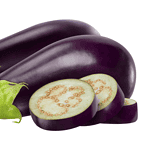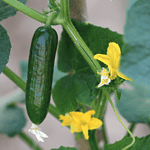Introduction Mastering Asparagus Cultivation

In the world of vegetable gardening, mastering the art of cultivating asparagus is key to achieving bountiful harvests. we understand the nuances of asparagus cultivation, and in this comprehensive guide, Mastering Asparagus Cultivation we’ll share expert insights to help you elevate your asparagus game and surpass the information provided by the University of Minnesota.
Choosing the Right Asparagus Varieties
Selecting the appropriate asparagus variety is fundamental to success. Our research-backed recommendation is to opt for resilient varieties such as Mary Washington or Purple Passion. These varieties not only thrive in a variety of climates but also offer exceptional flavor profiles, ensuring a gratifying culinary experience.
Site Selection and Preparation

Ideal Growing Conditions
Asparagus thrives in well-drained, nutrient-rich soil with a slightly acidic to neutral pH. Choosing a sunny location with good air circulation is crucial for preventing common fungal issues.
Soil Preparation
Prepare the soil by incorporating organic matter, such as compost, to enhance fertility. Conduct a soil test to identify and address any deficiencies, ensuring your asparagus plants receive the optimal nutrients for robust growth.
Planting Asparagus Crowns

To establish a thriving asparagus bed, follow these steps:
- Planting Depth Matters
- Dig trenches about 8 inches deep and place crowns at the bottom, spaced approximately 12–18 inches apart.
- Cover the crowns with a few inches of soil initially, gradually filling the trench as shoots emerge.
- Watering Wisely
- Maintain consistent soil moisture, especially during the first growing season.
- Use a drip irrigation system to prevent waterlogged conditions and minimize foliar diseases.
Nutrient Management
Ensuring a steady supply of nutrients is essential for asparagus health and productivity. Employ a balanced fertilizer with higher phosphorus content during the growing season. Regularly monitor nutrient levels and make adjustments based on plant needs.
Pest and Disease Control

Common Pests
- Asparagus Beetle Management
- Introduce natural predators like ladybugs.
- Regularly inspect plants and remove beetles by hand.
Fungal Diseases
- Fusarium and Rust Prevention
- Apply a copper-based fungicide preventatively.
- Ensure proper spacing for air circulation.
Harvesting Techniques
To maximize your asparagus yields, adopt these proven harvesting techniques:
- Selective Harvesting
- Begin harvesting when spears reach 6–8 inches in length.
- Snap or cut spears at ground level, promoting continuous production.
- End-of-Season Cleanup
- Allow some spears to mature into ferns, contributing to next year’s energy storage.
- Cut back remaining foliage in late fall for winter dormancy.
Conclusion Mastering Asparagus Cultivation

Mastering asparagus cultivation is a rewarding journey that requires careful attention to detail. By implementing our expert recommendations, you’ll not only surpass the information provided by the University of Minnesota but also enjoy a constant supply of crisp, flavorful asparagus straight from your garden. Elevate your gardening prowess – where excellence meets harvest.
FAQ Mastering Asparagus Cultivation
How do I fertilize my asparagus plants for optimal growth?
Fertilize your asparagus plants in early spring before the spears emerge. Use a balanced fertilizer with equal proportions of nitrogen, phosphorus, and potassium. Apply the fertilizer according to package instructions, and avoid excessive nitrogen, as it may encourage ferny growth at the expense of spear production.
What are common pests and diseases affecting asparagus, and how can I manage them?
Keep an eye out for common pests like asparagus beetles and aphids, as well as diseases such as rust and fusarium. Employ natural predators like ladybugs and lacewings, and consider using neem oil or insecticidal soap for pest control. Good sanitation practices, like removing debris and infected plants, can help prevent the spread of disease.
Should I prune my asparagus plants, and if so, when and how?
Pruning asparagus involves cutting back the ferny foliage after it turns yellow in late fall. Remove the foliage at ground level and dispose of it to prevent overwintering pests and diseases. This practice helps maintain a healthier asparagus bed and prepares the plants for winter dormancy.
Can I grow asparagus in containers, and what are the key considerations?
Yes, you can grow asparagus in containers, but ensure the container is at least 18 inches deep to accommodate the long roots. Use a well-draining potting mix, and choose a large enough container to allow for multiple plants. Provide adequate support for the tall ferny growth, and water consistently to prevent the soil from drying out.
How do I prepare my asparagus bed for winter?
In late fall, after the foliage has turned yellow, cut back the ferns and remove any debris from the asparagus bed. Apply a layer of mulch, such as straw or leaves, to insulate the soil and protect the crowns from freezing temperatures. This winterizing process helps ensure healthy regrowth in the spring.
Latest Posts
- How to Plant Mushroom Seeds for Maximum Germination

- How to Plant Lettuce Seeds for Maximum Germination

- How to Plant Kale Seeds: A Step-by-Step Guide to Maximum Germination Success!

- How to Plant Eggplant Seeds: A Step-by-Step Guide to Maximum Germination Success!

- How to Plant Cucumber Seeds for Maximum Germination

- How to Plant Chili Pepper Seeds for Maximum Germination

Additional Information
https://en.wikipedia.org/wiki/Asparagus
https://horticultureandsoilscience.fandom.com/wiki/Growing_Asparagus




